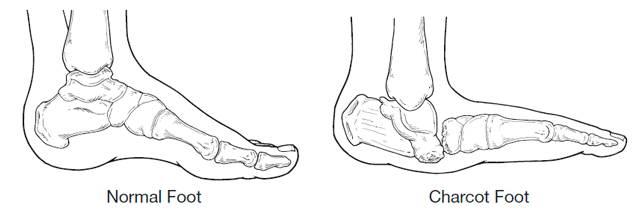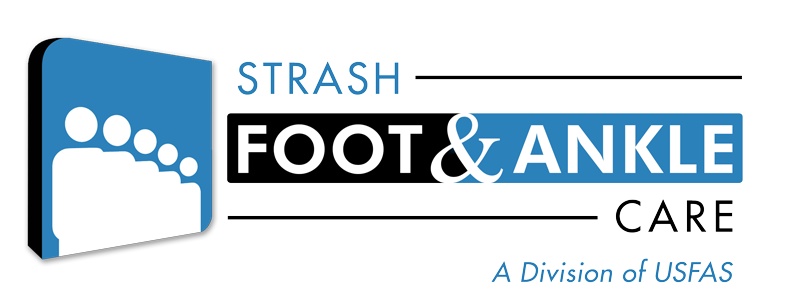
30 Oct Charcot Foot | A Condition NOT To Be Ignored
For those of you who know me, you know I often preach about the importance of paying attention to your feet. And while I’m sure at times I sound like a broken record, problems with your feet can often reveal many things about your overall health.
Take for example, the Charcot foot (pronounced SHAR-KO). Charcot foot is a condition that causes your foot bones to weaken, affecting individuals who have significant nerve damage (neuropathy), most notably, diabetics.
I’ve written about neuropathy and diabetes before, but basically, neuropathy is a condition that decreases the sensation in your feet. This can be very dangerous because it makes a person unable to feel pain, so the person continues to walk, which can lead to Charcot foot.
That said, as you walk on these weakened bones, your foot eventually changes shape, the joints collapse and your foot begins to look a little like the bottom of a rocking chair. This deformity not only increases your risk of breaking bones, but can also cause permanent disability and even amputation. Not good!
Symptoms
So, what are the symptoms? Symptoms may include redness and/or swelling in the foot, and changes in the appearance of your foot (that rocking chair appearance I was referring to).
Diagnosis
Like many foot and ankle issues, early diagnosis of Charcot foot is imperative for successful treatment. What I do with my patients is examine the foot and ankle, and ask questions about daily activities and any events that may have happened before the symptoms began. I may take x-rays and/or additional tests, and continue to take x-rays to monitor the condition.
Treatment
With all of my patients, I take a conservative approach, first. If I see surgery isn’t initially required, I often recommend the following:
Immobilization | Because the foot and ankle are so fragile during the early stage of Charcot, they must be protected so the weakened bones can repair themselves. Complete non-weight bearing is necessary to keep the foot from further collapsing. Sometimes, I instruct my patients not to walk on the affected foot until I determine whether or not it’s safe to place weight on it. At this time, I may fit the patient with a cast, removable boot or brace.
Orthopedic Shoes | When the cast or boot is removed, I usually fit my patients with custom shoes and inserts, allowing them to return to daily activities, as well as help prevent the Charcot from coming back. Even if my patient only has Charcot in one foot, it can also occur in the other foot, so treatment may include measures to protect both feet.
When non-surgical treatment isn’t an option, I’ll evaluate the most effective surgical procedure for that individual patient. The most common surgical procedure is called an osteoctomy (usually an outpatient procedure) and involves making an incision on the bottom of the foot to remove abnormal bone growth and cartilage fragments. After surgery, I usually place a cast until healing is complete.
Preventative Measures
As with many foot conditions, I always tell my patients they play a very important role in preventing Charcot foot and other complications. For example, keeping blood sugar levels normal can help reduce the progression of nerve damage. Additionally, check your feet daily and see a foot and ankle surgeon if you notice signs of Charcot foot or any abnormal changes in the foot.
Charcot foot is a VERY serious condition that can lead to severe deformities and loss of limbs – if you see signs, don’t wait until it’s too late – give my office a call. As always, it’s always my number one priority to help you place your best foot forward, again!

